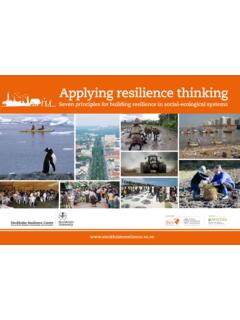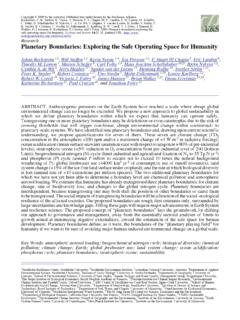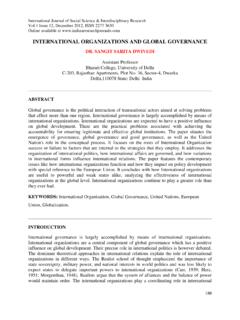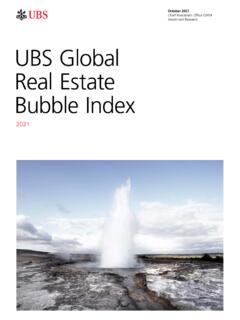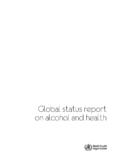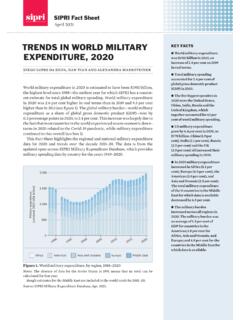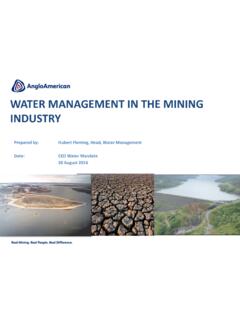Transcription of Planetary Boundaries: Exploring the Safe Operating Space ...
1 Copyright 2009 by the author(s). Published here under license by the Resilience m, J., W. Steffen, K. Noone, . Persson, F. S. Chapin, III, E. Lambin, T. M. Lenton, M. Scheffer,C. Folke, H. Schellnhuber, B. Nykvist, C. A. De Wit, T. Hughes, S. van der Leeuw, H. Rodhe, S. S rlin, Snyder, R. Costanza, U. Svedin, M. Falkenmark, L. Karlberg, R. W. Corell, V. J. Fabry, J. Hansen, , D. Liverman, K. Richardson, P. Crutzen, and J. Foley. 2009. Planetary Boundaries: Exploring thesafe Operating Space for humanity. Ecology and Society 14(2): 32. [online] URL: Boundaries: Exploring the Safe Operating Space for HumanityJohan Rockstr m 1,2, Will Steffen 1,3, Kevin Noone 1,4, sa Persson 1,2, F. Stuart III Chapin 5, Eric Lambin 6, Timothy M.
2 Lenton 7, Marten Scheffer 8, Carl Folke 1,9, Hans Joachim Schellnhuber 10,11, Bj rn Nykvist 1,2, Cynthia A. de Wit 4, Terry Hughes 12, Sander van der Leeuw 13, Henning Rodhe 14, Sverker S rlin 1,15, Peter K. Snyder 16, Robert Costanza 1,17, Uno Svedin 1, Malin Falkenmark 1,18, Louise Karlberg 1,2, Robert W. Corell 19, Victoria J. Fabry 20, James Hansen 21, Brian Walker 1,22, Diana Liverman 23,24, Katherine Richardson 25, Paul Crutzen 26, and Jonathan Foley 27 ABSTRACT. Anthropogenic pressures on the Earth System have reached a scale where abrupt globalenvironmental change can no longer be excluded. We propose a new approach to global sustainability inwhich we define Planetary boundaries within which we expect that humanity can operate one or more Planetary boundaries may be deleterious or even catastrophic due to the risk ofcrossing thresholds that will trigger non-linear, abrupt environmental change within continental- toplanetary-scale systems.
3 We have identified nine Planetary boundaries and, drawing upon current scientificunderstanding, we propose quantifications for seven of them. These seven are climate change (CO2 concentration in the atmosphere <350 ppm and/or a maximum change of +1 W m-2 in radiative forcing);ocean acidification (mean surface seawater saturation state with respect to aragonite 80% of pre-industriallevels); stratospheric ozone (<5% reduction in O3 concentration from pre-industrial level of 290 DobsonUnits); biogeochemical nitrogen (N) cycle (limit industrial and agricultural fixation of N2 to 35 Tg N yr-1)and phosphorus (P) cycle (annual P inflow to oceans not to exceed 10 times the natural backgroundweathering of P); global freshwater use (<4000 km3 yr-1 of consumptive use of runoff resources).
4 Landsystem change (<15% of the ice-free land surface under cropland); and the rate at which biological diversityis lost (annual rate of <10 extinctions per million species). The two additional Planetary boundaries forwhich we have not yet been able to determine a boundary level are chemical pollution and atmosphericaerosol loading. We estimate that humanity has already transgressed three Planetary boundaries: for climatechange, rate of biodiversity loss, and changes to the global nitrogen cycle. Planetary boundaries areinterdependent, because transgressing one may both shift the position of other boundaries or cause themto be transgressed. The social impacts of transgressing boundaries will be a function of the social ecologicalresilience of the affected societies.
5 Our proposed boundaries are rough, first estimates only, surrounded bylarge uncertainties and knowledge gaps. Filling these gaps will require major advancements in Earth Systemand resilience science. The proposed concept of Planetary boundaries lays the groundwork for shiftingour approach to governance and management, away from the essentially sectoral analyses of limits togrowth aimed at minimizing negative externalities, toward the estimation of the safe Space for humandevelopment. Planetary boundaries define, as it were, the boundaries of the Planetary playing field forhumanity if we want to be sure of avoiding major human-induced environmental change on a global Words: atmospheric aerosol loading; biogeochemical nitrogen cycle; biological diversity; chemicalpollution; climate change; Earth; global freshwater use; land system change; ocean acidification;phosphorus cycle; Planetary boundaries; stratospheric ozone.
6 Sustainability1 Stockholm Resilience Centre, Stockholm University, 2 Stockholm Environment Institute, 3 Australian National University, Australia, 4 Department of AppliedEnvironmental Science, Stockholm University, 5 Institute of Arctic Biology, University of Alaska Fairbanks, 6 Department of Geography, University ofLouvain, 7 School of Environmental Sciences, University of East Anglia, 8 Aquatic Ecology and Water Quality Management Group, Wageningen University,9 The Beijer Institute of Ecological Economics, Royal Swedish Academy of Sciences, 10 Potsdam Institute for Climate Impact Research, 11 EnvironmentalChange Institute and Tyndall Centre, Oxford University, 12 ARC Centre of Excellence for Coral Reef Studies, James Cook University, 13 School of HumanEvolution and Social Change, Arizona State University, 14 Department of Meteorology, Stockholm University, 15 Division of History of Science andTechnology, Royal Institute of Technology, 16 Department of Soil, Water, and Climate, University of Minnesota, 17 Gund Institute for Ecological Economics,University of Vermont, 18 Stockholm International Water Institute, 19 The H.
7 John Heinz III Center for Science, Economics and the Environment,20 Department of Biological Sciences, California State University San Marcos, 21 NASA Goddard Institute for Space Studies, 22 CSIRO SustainableEcosystems, 23 Environmental Change Institute, School of Geography and the Environment, 24 Institute of the Environment, University of Arizona, 25 EarthSystem Science Centre, University of Copenhagen, 26 Max Planck Institute for Chemistry, 27 Institute on the Environment, University of MinnesotaEcology and Society 14(2): 32 CHALLENGES REQUIRE NEWTHINKING ON global SUSTAINABILITYH uman activities increasingly influence the Earth sclimate (International Panel on Climate Change(IPPC) 2007a) and ecosystems (MillenniumEcosystem Assessment (MEA) 2005a).
8 The Earthhas entered a new epoch, the Anthropocene, wherehumans constitute the dominant driver of change tothe Earth Systemi (Crutzen 2002, Steffen et ). The exponential growth of human activitiesis raising concern that further pressure on the EarthSystem could destabilize critical biophysicalsystems and trigger abrupt or irreversibleenvironmental changes that would be deleterious oreven catastrophic for human well-being. This is aprofound dilemma because the predominantparadigm of social and economic developmentremains largely oblivious to the risk of human-induced environmental disasters at continental toplanetary scales (Stern 2007).Here, we present a novel concept, planetaryboundaries, for estimating a safe Operating Space forhumanity with respect to the functioning of the EarthSystem.
9 We make a first preliminary effort atidentifying key Earth System processes and attemptto quantify for each process the boundary level thatshould not be transgressed if we are to avoidunacceptable global environmental change is here defined in relation tothe risks humanity faces in the transition of theplanet from the Holocene to the Anthropocene. Therelatively stable environment of the Holocene, thecurrent interglacial period that began about 10 000years ago, allowed agriculture and complexsocieties, including the present, to develop andflourish (Fig. 1). That stability induced humans, forthe first time, to invest in a major way in their naturalenvironment rather than merely exploit it (van derLeeuw 2008).
10 We have now become so dependenton those investments for our way of life, and howwe have organized society, technologies, andeconomies around them, that we must take the rangewithin which Earth System processes varied in theHolocene as a scientific reference point for adesirable Planetary some natural environmental fluctuationsover the past 10 000 years ( , rainfall patterns,vegetation distribution, nitrogen cycling), Earth hasremained within the Holocene stability domain. Theresilience of the planet has kept it within the rangeof variation associated with the Holocene state, withkey biogeochemical and atmospheric parametersfluctuating within a relatively narrow range (Fig.)

